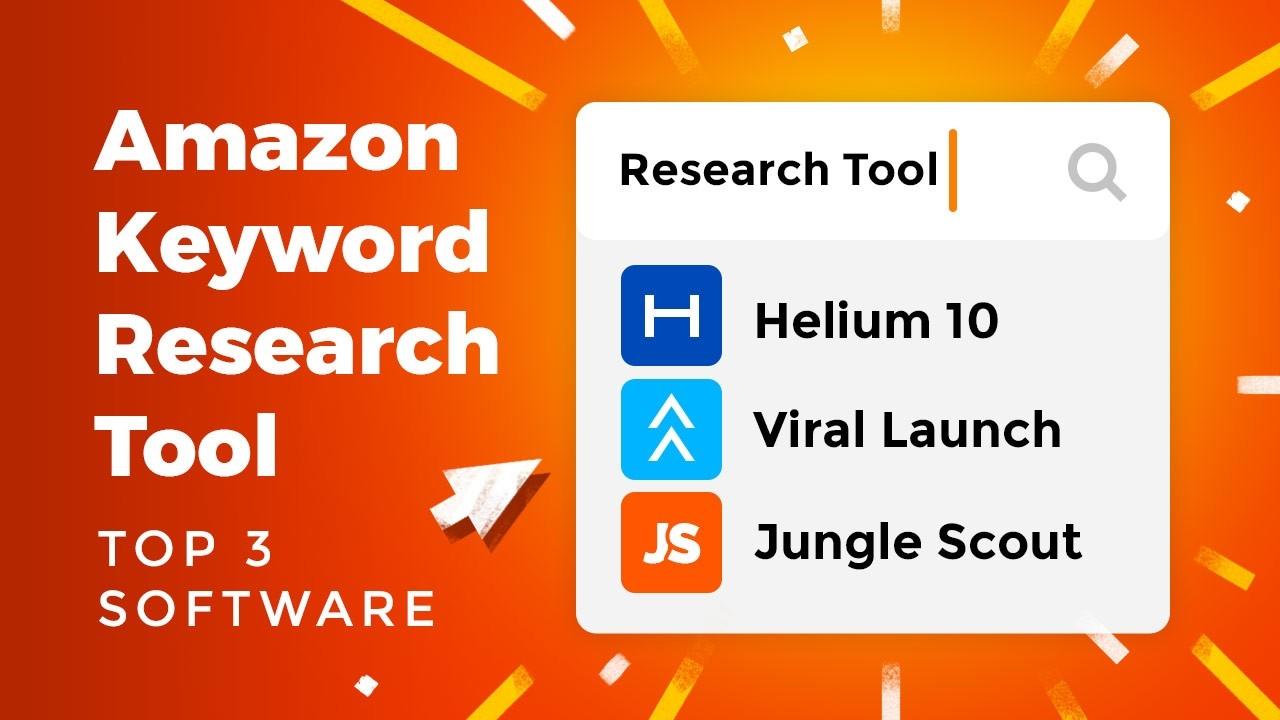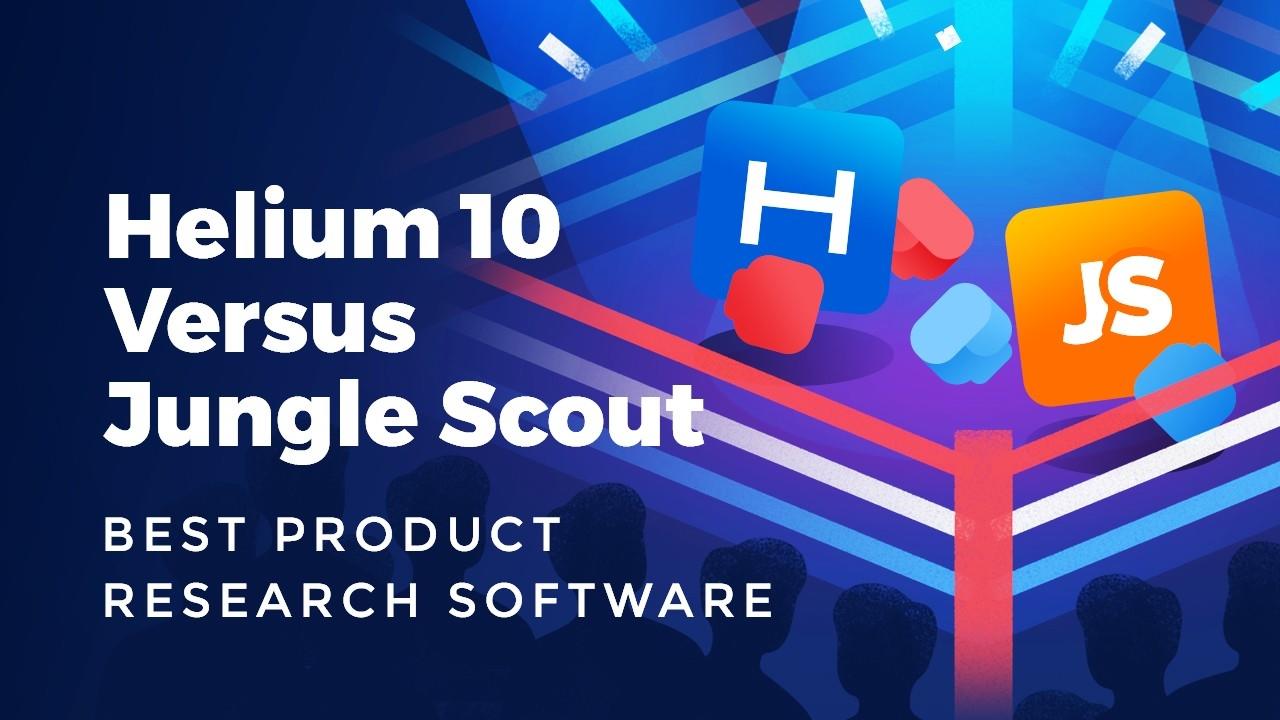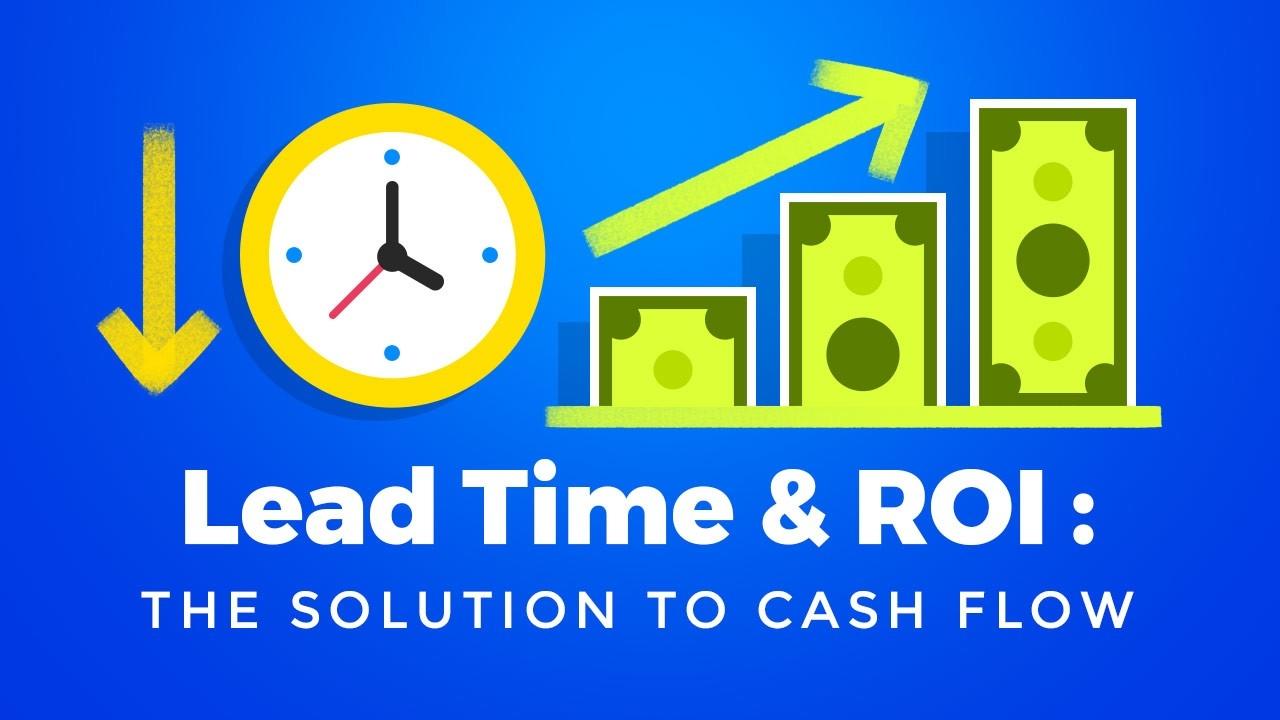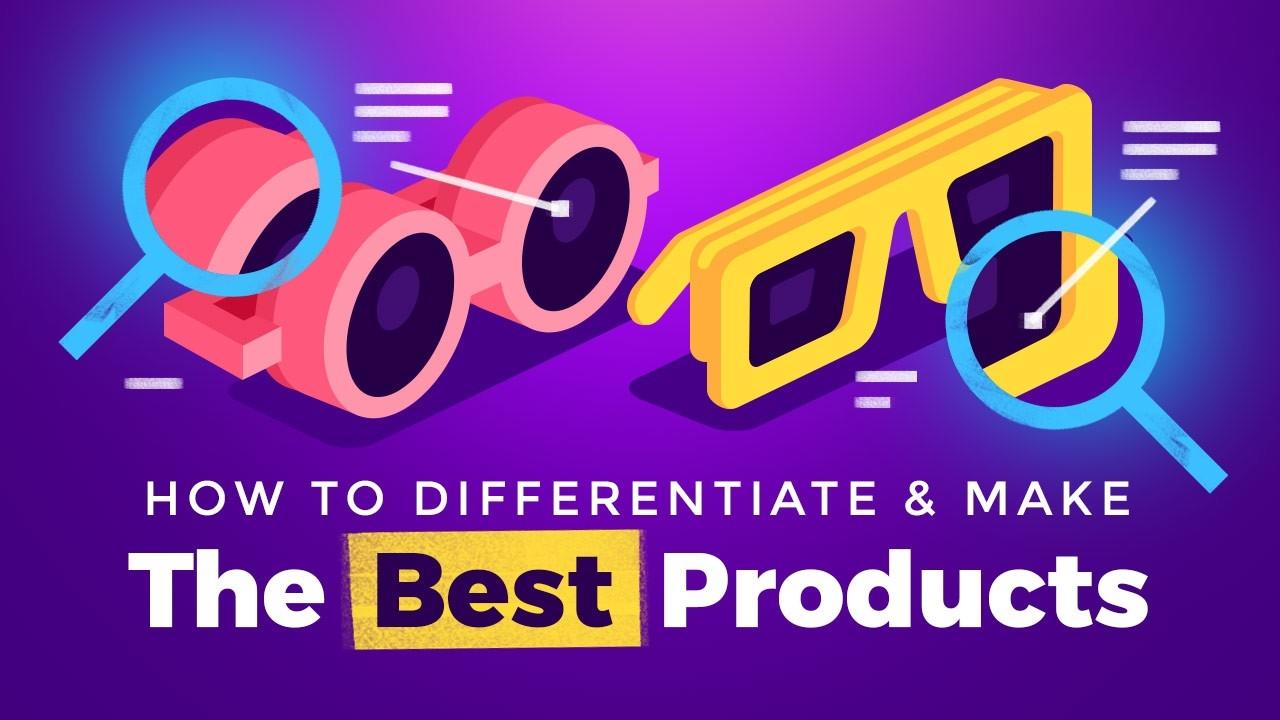Amazon FBA Product Research - 2020 Tools & Methods For Success

Product research on Amazon is the biggest indicator of who will succeed or fail as an Amazon FBA seller. In 2018, over 200,000 Amazon sellers brought in $100,000 or more in revenue while 25,000 sellers went on to do over $1 million in sales.
Successful Amazon FBA sellers understand the importance of correctly doing Amazon product research. Doing effective product and market research on Amazon is not an option but a necessity. As more sellers join FBA, Amazon markets will get more saturated over time making it harder to profit.
Believe it or not, finding winning Amazon FBA products you can profit from is a lot easier than you might think, granted you have the RIGHT INFORMATION and TOOLS.
Through The Last Amazon Course, I’ve helped over 20,000 students start a profitable eCommerce business by selling on Amazon.
Follow this guide and learn the keys to successfully doing FBA product research in 2019.
What We’re Covering:
- What is Amazon Product Research?
- Why Amazon Product Research Is Important
- How Unsuccessful Sellers Do Product Research
- Product Research Framework For Successful Sellers
- What Makes For a Successful Private Label Product?
- Common Barriers to Entry For Amazon FBA Sellers
- How Much Money Do You Need To Sell On Amazon
- 7-figure Amazon Sellers Product Research Methodology
- How Do You Find Products To Sell on Amazon FBA?
- Best Amazon FBA Product Research Tools In 2019
- Where Can I Get Products To Sell On Amazon?
- How To Do Amazon FBA Product research Step By Step
What is Amazon Product Research?
Amazon product research is the process FBA Sellers use to collect information, in order to determine the wants and needs of Amazon shoppers. Product research helps guide Amazon sellers in finding winning product ideas that cater to Amazon’s 300 million-plus global customer base.
By looking at the data, Amazon sellers can gauge the demand level of products across the platform and make informed business decisions regarding what products to source. Mastering product research is the key to successfully selling on Amazon FBA in 2019 and beyond.
Why Amazon Product Research Is Important
Just in the U.S. alone, there are over 100 million Amazon Prime members who pay a monthly fee to shop on Amazon. These Prime members on average spend $1,400 a year on Amazon compared to none Prime members who only spend $600.
Amazon is also the largest online retailer in the world and its dominance and customer base will only continue in the coming years.
Whether you are just starting your Amazon FBA journey or still in search of your first winning product on Amazon, it’s important you understand the correlations between success as an Amazon seller and how well you are able to do product research.
How Unsuccessful Sellers Do Product Research
Finding winning products you can sell on Amazon, requires having the right approach and framework for Amazon FBA product research.
Amazon beginners don’t often realize how time-consuming and complex correctly doing product research can be.
Even worse, most FBA seller’s don’t succeed because their approach to product research is misguided. Most sellers are just copying existing products on Amazon and hoping to get a piece of the existing sales.
As most learn the hard way, copy and Paste is a formula for failure on Amazon FBA. Anyone can sell on Amazon, but not everyone can sell in every market.
Amazon Product Research Framework For Successful Sellers
Each market on Amazon is going to require a different level of skill, capital, and strategy. You’ll have to learn how to analyze and identify factors that are important to your specific needs - such as time, money and skills.
There is no cookie-cutter formula or five-minute solution for finding the perfect product to sell on Amazon. Successful sellers are those who understand how Amazon works; then leverages the already existing markets and demand, to find exactly what Amazon customers want and or need.
As an Amazon FBA seller, just one product can go on to change your life. It wasn’t until I mastered the product research process, that I found and successfully launched a product that sold over $6 million in just 6 months.
Take note of the winning criteria and business fundamentals that I utilized to attain my Amazon FBA success. More importantly, Take action on this valuable information. Amazon FBA does not work unless you do!
Watch over 50+ videos dissecting every step of the product research process from idea, to research, and product validation.
Checkout: AMAZON RESTRICTED PRODUCTS: BIGGEST PITFALLS TO AVOID
What Makes For a Successful Private Label Product?
Private labeling is the most lucrative way to leverage Amazon FBA in 2019 and beyond in my opinion. By 2022, amazon’s private label business is expected to reach $25 billion in annual revenue.
Unfortunately, there is no specific formula or step by step guide on finding the perfect product to sell on Amazon. In fact, successful sellers know, we don’t directly determine what products sell on Amazon, but rather Amazon’s millions of customers do.
If you want to succeed as an Amazon seller, your role is then to analyze this demand and follow it up by supplying the customers with a solution, in the form of a quality product.
Although there are no specific criteria that will guarantee your success, it’s very important to keep in mind the following key barriers to entry, as a sort of best practice while doing product research.
Common Barriers to Entry For Amazon FBA Sellers
Another important factor to consider when deciding which market and product to sell on Amazon FBA is barriers to entry. Understanding barriers to entry is key to finding effective Amazon markets you can succeed in.
Here are some Barriers to consider during your product research process.
Capital
Do you have enough money and or resources to compete in a given market?
This is a big barrier to entry on Amazon FBA. It’s probably why a lot of you are pursuing certain markets over the other. Some of my higher-level friends, actually use barriers to entry as a competitive advantage.
However, in some cases, barriers to entry can actually be an advantage because not everyone has the resources and skills to compete in every market. This, in turn, leads to lower competition for the sellers who are capable to execute in those given markets.
For example, some of my friends during their Amazon product research process, only source products that are over $50 each. That’s because they know there's only a couple of people that have the money to do that, which means lower competition.
Size & Logistics
Some products are too big to ship affordably through Amazon FBA. Amazon fees are based on the weight and dimensions of the packaged item. Here is a list of product size tiers as defined by Amazon.
Some products are so large that you can't ship them affordably through Amazon. This is a huge factor to consider during your Amazon product research process.
Seasonality
Not all seasons are equal on Amazon, with the 4th quarter being the busiest season of the year. Do you have the experience and ability to correctly forecast inventory and demand for a given season?
Keep in mind product research data could also be skewed by the rise in seasonal demand in certain markets. For example, you don’t want to get research data on a summer product during the winter season.
A lot of people won't do seasonal products because it's harder to find. A major barrier to entry for seasonal product is ‘How do you know what seasonal products are going to sell the best?’ How do you know exactly how much to buy and sell? You don't want to be stuck with it for a year.
Overcoming Barriers To Entry
Understanding barriers to entry is useful for making decisions in your product research process. You should always take barriers to entry into account but don’t let it intimidate you or deter you from taking action.
When selling on Amazon, just when you get over these barriers to entry is where the greatest success usually lies.
If you look at my eclipse example, I faced many barriers at once. We had seasonality, capital, liability, certification, and even logistical nightmares .
I had to assemble a supply chain of multiple manufacturers. I had to create certain products and reinvent as I got feedback in real-time. We had to get products from Germany, other parts from China and then pre-assemble them and build the packaging in the United States - At my house.
This is all before I even shipped the products into Amazon. I literally had everything against me or everything for me, depending on how you look at it.
I chose the latter framework and approach to this opportunity, as I try and do with most things in life. In hindsight, that’s a big part of why I was able to go from $0 - $6 million in under a year.
Choose your barriers to entry wisely. But, you also don't want to choose something that's too competitive or has too many barriers. Choose markets you're capable of succeeding in with your capital and skill level.
How Much Money Do You Need To Sell On Amazon

Use this capital requirement spreadsheet to figure out exactly how much money you will need to launch your Amazon FBA products.
In the above spreadsheet Example:
- Product Cost Per Unit - $2.50
- Required Units Per Month - 400
- Months of Inventory - 2
- Monthly PPC Budget - $300
- Total Required Capital For This Product = $2600
This spreadsheet also contains an ROI & Lead template to help you gauge the potential growth rate of your Amazon investment.

A key to growth on Amazon is your products return on investment ( ROI), combined with your manufacturers lead time. For optimal growth, focus on higher ROI and shorter lead time, not profit margin.
Read more: AMAZON PPC 2019 - COMPLETE STEP BY STEP GUIDE FOR BEGINNERS
7-figure Amazon Sellers Product Research Methodology
Here are some winning product research criteria for achieving success on Amazon FBA.
Differentiation
This is one of the most important criteria for determining if you will fail or succeed when researching and sourcing private label products on Amazon. Why should a customer buy your product over the competition? How are you adding more VALUE to their lives
Being able to differentiate and adding value to the customer, relative to your competitors is essential to success in any market on Amazon.
Here are some ways you can add value and differentiate your products:
- Make a better assortment of goods
- Provide different colors and features
- Provide a more effective solution
- Better marketing to the customer
- Bundle to create a competitive advantage
Premium Quality
hen private labeling any product, I strongly suggest you have a premium product and brand. A big part of success on Amazon is built on having the BEST QUALITY PRODUCTS.
As an FBA seller always aim to improve products and the customer experience on Amazon, you will win in the long term.
Here is why:
- Perceived Value - People often associate higher quality with higher-priced items. This means if you bring to market a premium product, you are able to charge a lot higher. Keep in mind, there is always a market for the rich.
- Higher margins - Having quality premium products also leads to higher margins and ROI. Because you are able to charge a higher price point, you can retain a higher % of profits. Reinvest more and grow at a faster rate than your competitors.
- Good Reviews - Getting 4 and 5-star reviews on Amazon is very difficult. Having the best product will subsequently lead to more quality reviews than your competition. This, in turn, leads to more sales and profit for you.
- Customers - As I’ve previously mentioned, Amazon is the most customer-centric company in the world. Everything they do is with the goal of keeping their customers happy. Bringing quality products to the market will make your customers happy and Amazon in return will reward for it.
How Do You Find Products To Sell On Amazon FBA?
All of the successful Amazon sellers know, that product research is one of the most important factors in determining if you will become a successful Amazon seller. Simply put, correctly dong product research will make or break your career as an Amazon seller.
There are two overarching steps in product research; idea gathering and market validation.
Idea Gathering
Gathering ideas is the first step in the product research process. This is where you gather potential ideas by brainstorming and using different methods.
For example, you can use the BSR (best seller rank) to get ideas of what products are selling well, relative to others. The BSR ranks all products in each category on Amazon by sales rank, the best selling product is ranked number 1.
Here are some alternative ways to generate Amazon product ideas:
- Amazon’s best-seller list
- Amazon storefronts
- Amazon’s Movers & Shakers
- Browsing on Pinterest and Etsy
- Exploring the Shopify stores
- Looking at the eBay’s trending list
- Using Google Trends
The easiest and most recommended way to gather product ideas is to use Amazon product research tools with Amazon’s data.
There are tools like Viral Launch and Helium 10 that can provide you data on Amazon sales for each product. You can search their database for potential products based on the set of criterias that fit your circumstances.
Once you gather your product ideas, you then need to validate this idea by using data from the given Amazon market.
Keyword Research
Amazon keyword research is fundamental to figuring out what to sell on Amazon FBA. On Amazon, your goal and mindset should be to capture the demand on the platform, not try and generate it. Therefore, finding the right keywords with the highest search volume is critical to your success.
Keyword search volume is also one of the biggest mistakes I see sellers make on Amazon. You can have the best product in the market but if nobody is searching for it, you will not make sales
The importance of finding the keywords with the highest search volume cannot be understated.
Tools like Helium 10, Viral Launch are enormously helpful in choosing the right keywords. They provide you with exact data directly from Amazon, taking the guesswork out of keyword research.
Market Validation
Market validation is the next step in the process. Once you find potential product ideas, you then dissect the market through analysis.
It’s very important to validate the market demand for a given product before launching it. This is specifically the reason for my earlier product failures on Amazon.
I was blindingly launching products before validating if there is actually demand for this product in the marketplace.
Best Amazon FBA Product Research Tools In 2019
Anyone looking to sell on Amazon profitably needs TWO things, the RIGHT INFORMATION and the RIGHT TOOLS.
The reason why I made it my mission to give away the most comprehensive Amazon course on the market today, for only a $1 a month - while “gurus” are charging hundreds of thousands, is because I’ve been in your shoes before.
Without the Right Amazon Research Tools, it’s impossible to succeed on Amazon.
I failed on my first 7 Amazon products before I became a multi-millionaire at the age of 25.
In hindsight, I failed because I didn’t use the best tools and therefore didn’t have the right products to sell.
The best way I can help you duplicate my success on Amazon FBA is to provide you the exact information that led to my success for less than the cost of a cheeseburger; So you can save your money for the best Amazon research TOOLS you will need to succeed.
I can't emphasize enough the importance of having the correct product research data on which to make your sourcing decision.
Here are the best product research software I personally used to successfully find profitable Amazon FBA products. These tools provide you with exact data directly from Amazon, taking the guesswork out of product research for you.
Helium 10 Product Research Tools
Helium 10 has a suite of product research tools that can guide you through every step of your Amazon product research process. With Helium 10 you get access to over 450 million products in its product database, which is second to only Amazon.
Black Box
With Helium 10’s Black Box tool, you can use smart advanced filters to find winning products that are perfect for your needs and preference.
Instead of spending hours manually looking through Amazon for products, you can search the Helium 10s database of over 450+ million products in minutes. Black Box allows you to search by category, estimated monthly sales revenue, price, and review ratings.
Xray Chrome Extension
Helium 10’s Xray is a chrome extension that helps you get a bird’s-eye view of a given market as you browse Amazon. You can open up Xray on an Amazon search results page or product page to see the competitor's monthly revenue, average price, and reviews to validate potential product opportunities before sourcing.
Helium 10 is known for its accurate data and help you get a great understanding of profitable markets to excel in Amazon FBA.
Trendster
Another powerful asset that comes with Helium 10’s suite of tools is Trendster. Within seconds, you are able to determine if a product will have steady year-round sales or is a slow-moving inventory. This is the best way to analyze product seasonal demand and check for trends to ride and profit from.
Trendster allows you to quickly analyze products so you can determine sales strategies based on seasonality and better plan for revenue fluctuations and cash flow decisions in your Amazon business.
Apart from product research, Helium 10 also has over 12 different tools to you help you profitably find and launch your Amazon FBA products.
Here is a detailed walkthrough of Helium 10's suite of tools for Amazon FBA product research. Watch this & 350+ other videos to help you find profitable products you can sell on Amazon FBA.
Helium 10 Coupon
Viral Launch Product Research Tools
Another great software for removing the guesswork from your Amazon product research process is Viral Launch. You can easily find thousands of untapped markets on Amazon by using Viral Launch's unique filters.
Their easy to use Amazon seller tools can help you find and scale your Amazon products.
Product Discovery
Viral Launch’s Product Discovery software helps you confidently find your next product. With this easy-to-use Amazon product finder, you can quickly filter through over 200 million Amazon products, keywords, brands, and categories to find the one that’s right for you.
Viral Launch can help you cut down the amount of time you spend searching for products. You can use the different filters in product discovery to pull target results that meet your winning criteria. It also gives an option to use the advanced filters to get an even more specific list of products.
Market Intelligence
Viral Launch’s Market Intelligence Chrome extension tools allow Amazon sellers to confidently validate every product idea before sourcing. Market Intelligence provides you in-depth easy to understand data for making decisions.
Market Intelligence provides Amazon sellers with accurate sales estimates that lead to sourcing better quality products. Among sales estimate data, Market Intelligence also gives you market price trends, review rates, and a product idea score to help you quantify a given product's worth.
Competitor Intelligence
Competitor Intelligence uncovers top sellers’ strengths while helping you capitalize on their weaknesses. See their sales tactics, advertising strategies, and the keywords they’re neglecting to help you find opportunities for growth and improvements.
Viral Launch has helped Amazon seller’s drive over $8 billion in sales. Use these powerful Amazon product research tools and gain a competitive advantage in any market.
Here is a detailed tour of Viral Launch's software for Amazon FBA product research. Watch this & 350+ other videos to help you find profitable products you can sell on Amazon FBA.
Jungle Scout Product Research Tools
Another great Amazon product research software that can help you find, launch and grow your product is Jungle Scout. Whether you are just starting your Amazon journey or a seasoned seller, Jungle Scout can help you find profitable product opportunities faster than your competitors.
Product Database
Jungle Scouts Product Database is a comprehensive database containing over 70 million products pulled directly from the Amazon catalog. It allows Amazon sellers to easily search for products across Amazon global marketplaces with pre-set filters or specific filters that meet your preferences.
Product Tracker
Product Tracker will track potential product ideas over time, monitoring daily inventory, sales, prices, and best seller rank to easily measure each product's performance with accuracy. You can easily organize and compare your product ideas with confidence and discover seasonal or year-round opportunities.
Jungle Scout Chrome Extension
With Jungle Scout’s chrome extension Amazon sellers can easily extract product rank, sales volume, and estimated monthly revenue for each product and market on Amazon. Use it to help you seek out tons of product opportunities and avoid making bad product investment.
Supplier Database
New to Jungle Scout, their Supplier Database helps Amazon sellers find qualified international suppliers based on their search criteria. This database also shows the supplier’s top customers and the products they manufacture. Sellers can use customer volume and confirmed shipments from suppliers to qualify the best manufacturers to create their products.
Take advantage of this tool and instantly access vetted, high-quality manufacturers that can bring your Amazon product ideas to reality.
Jungle Scout has helped hundreds of thousands of Amazon entrepreneurs just like launch over 200,000+ products. Leverage these Amazon product research tools and find the perfect Amazon FBA product for you.
Where Can I Get Products To Sell On Amazon?
As I mentioned, different markets on Amazon will require a different level of skill and capital in order to succeed. So finding profitable products and successfully selling them is going to depend on you being able to find the right market and product for your level of resources and skill.
This also applies to the different Amazon Business models. As previously mentioned, anyone can sell in a market on Amazon but not everyone can profitably compete.
Where you source your Amazon products will depend on the business model your using.
Amazon Private Label
Private labeling is a business model and process of putting your own brand or label onto a product and selling it. There are thousands of items on Amazon that are just rebranded of readily available white-label products using this exact method. This is also the method I used to make my millions on Amazon.
This business model can range from sellers who just add logos to existing white-label products to sellers who develop, innovate or create new solutions to an existing customer problem.
Because private labelers deal directly with manufacturers - cutting out the middlemen, they have a high degree of flexibility with their product offerings on Amazon. They also get to retain more profit.
Keep in mind, as an Amazon seller - especially beginners, you will be sourcing your Amazon products from China via Alibaba.
Retail Arbitrage
Arbitrage is a business model where sellers purchase products from retail or online stores at a discounted price, then resell it on Amazon FBA at full price. Although this business model is hard to scale, it’s often the easiest way to start selling on Amazon.
Wholesale
Wholesale requires you buy brand name products from manufacturers at wholesale prices and sell them on Amazon. Unlike private labeling, with wholesale, you’re buying products from established brands such as Adidas or Nike, not Chinese suppliers on Alibaba.
Learn more: Amazon Seller’s Guide To Sourcing From Alibaba in 2019
FBA business models such as retail arbitrage, are easier and require relatively less initial capital to start. Private labeling, while it requires more work and capital, is extremely more profitable. Our focus in this guide is on private labeling.
In my opinion, selling physical products on Amazon is the most lucrative opportunity in the world right now! Where else can you get a 340X ROI on your money in just 6 months?
Here is a comparison chart of the different Amazon business models.
How To Do Amazon FBA Product Research Step By Step
Here are the steps for doing Amazon product research in 2019.
- Pick the Amazon business model for your level of skill and resources.
- Use this required capital spreadsheet to figure out how much money you need to start.
- Understand your barriers to entry and set your sourcing criteria
- Get Helium 10, Viral Launch, or Jungle Scout to get accurate product research data.
- Follow the data from the product research tools to find profitable product opportunities
- Validate the product idea through market and keyword research
- Source your product and launch it on Amazon.
In summary, picking what to sell on Amazon FBA is a crucial first step in the process of becoming an Amazon seller. You need to take into account the different factors that make for a successful Amazon product.
In order to find profitable products, you must listen to what research is telling you about a given market and think logically.
To be successful as an Amazon seller, you have to learn to capture the demand already on the platform through doing product and market analysis. You do this by first gathering potential product ideas, then you must validate these ideas through market analysis.
Tools such as Viral Launch, Helium 10 and Jungle Scout can immensely help you in this process. Before you start selling, check out How to Sell on Amazon to get an in-depth understanding of what it takes to become a successful Amazon Seller.

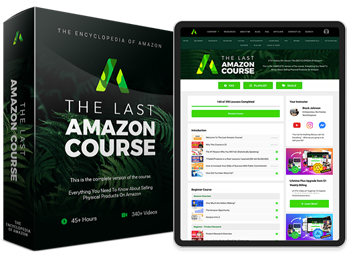
Over 375+ videos (45+ hours)
Interviews with other million dollar sellers and CEO's, and much more

